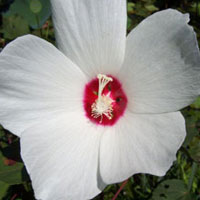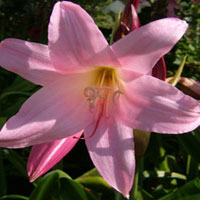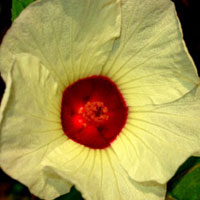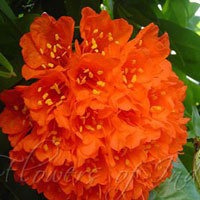Rose

The origins of Roses are disputed. A popular theory holds it was founded in the 8th century BC by Greek colonists from Rhodes. It seems more probable, however, that it was founded in the 5th century BC by Greeks from Massalia, perhaps with an admixture of colonists from neighbouring Empúries. Remains of the Greek settlement can still be seen. Remains from the Roman period go back to the 2nd century BC and continue well into Christian times with a paleochristian church and necropolis. After the collapse of Roman power the town seems to have been abandoned, but a fortified settlement from the Visigothic period has been excavated on the nearby Puig Rom.
This extremely popular species of rose in India, is a cultivated hybrid, native to Asia Minor, introduced to Europe. Within India, it is cultivated throughout in gardens. More commonly known as the Damask rose or simply as "Damask", it is a rose hybrid, derived from Rosa gallica and Rosa moschata. It is a deciduous shrub growing to 2.2 m tall, the stems densely armed with stout, curved prickles and stiff bristles. The leaves are pinnate, with five (rarely seven) leaflets. They are renowned for their fine fragrance, and their flowers are commercially harvested for rose oil used in perfumery. In south India, it is used in garlands, and in making rose-water. The name panneer means rose-water.
This extremely popular species of rose in India, is a cultivated hybrid, native to Asia Minor, introduced to Europe. Within India, it is cultivated throughout in gardens. More commonly known as the Damask rose or simply as "Damask", it is a rose hybrid, derived from Rosa gallica and Rosa moschata. It is a deciduous shrub growing to 2.2 m tall, the stems densely armed with stout, curved prickles and stiff bristles. The leaves are pinnate, with five (rarely seven) leaflets. They are renowned for their fine fragrance, and their flowers are commercially harvested for rose oil used in perfumery. In south India, it is used in garlands, and in making rose-water. The name panneer means rose-water.
Ragged Mallow

Ragged Mallow is scientifically called Oenothera speciosa (speciosa stands for "showy"), beside of it has such alternative names as Pinklady and Showy evening primrose. This wildflower originates from the southeastern America and Mexico. This perennial plant is capable to attain the length of 0,5 cm. It bears alternatively arranged leaves, having about 10 cm long and 4 cm wide. They vary by shape, ranging from linear to obovate, with toothed or wavy margins. Pink primrose is remarkable by its solitary, 4-petal- blooms in the shape of a cup. These aromatic pinky blossoms are in flower from the summer into early fall. Actually they begin out in white, turning pink with the aging. Their throats, stigmas and stamens come in a yellowish shade. Pink primrose blooms at the day and night hours, but usually in the pre-dawn time, as it closes during the full sun. Evening primrose can be used in a vast array of semi-wild garden settings such as rock garden, wildflower meadow, borders and along the edges of roadsides and trails.
Malvaceae and is considered to be the type species for the genus. Known as common mallow to English speaking Europeans, it acquired the common names of cheeses, high mallow and tall mallow (mauve des bois by the French) as it migrated from its native home in Western Europe, North Africa and Asia through the English speaking world.M. sylvestris is a vigorously healthy plant with showy flowers of bright mauve-purple, with dark veins; a handsome plant, often standing 3 or 4 feet (1 m) high and growing freely in fields, hedgerows and in fallow fields.
Malvaceae and is considered to be the type species for the genus. Known as common mallow to English speaking Europeans, it acquired the common names of cheeses, high mallow and tall mallow (mauve des bois by the French) as it migrated from its native home in Western Europe, North Africa and Asia through the English speaking world.M. sylvestris is a vigorously healthy plant with showy flowers of bright mauve-purple, with dark veins; a handsome plant, often standing 3 or 4 feet (1 m) high and growing freely in fields, hedgerows and in fallow fields.
Swamp Lily

Swamp Lily is an aquatic, annual or perennial herb. It has two types of leaves, submerged and floating. The submerged leaves are juvenile and strap-like. The adult leaves float and are elliptical in shape, 2-16 cm x 1-10 cm. These floating leaves are dark green to bronze and rather shiny. They are carried on very long stalks, up to 1.2 m long. There are also two types of flowers: closed and open petalled. The closed flowers are known as cleistogamous. This means that they are self-pollinated and set seed. The open flowers are the most visible and are white with reddish or purple centres, three petalled and about 5 cm in diameter. Flowers emerge in the warmer months. Blooms appear regularly, during the flowering season, and last for less than a day. Swamp Lily grows in slowly flowing fresh water or the still water of ponds, dams and lagoons. The Swamp Lily may form extensive colonies in nutrient-rich water. Swamp Lily is native to Australia, and naturalized in many places
Deccan Hemp

Deccan Hemp is a species of Hibiscus, probably native to southern Asia, though its exact natural origin is unknown. The name also applies to the fibre obtained from this plant. Kenaf is one of the allied fibres of jute and shows similar characteristics. It is an annual or biennial herbaceous plant (rarely a short-lived perennial) growing to 1.5-3.5 m tall with a woody base. The stems are 1-2 cm diameter, often but not always branched. The leaves are 10-15 cm long, variable in shape, with leaves near the base of the stems being deeply lobed with 3-7 lobes, while leaves near the top of the stem are shallowly lobed or unlobed lanceolate. The flowers are 8-15 cm diameter, white, yellow, or purple; when white or yellow, the centre is still dark purple. The fruit is a capsule 2 cm diameter, containing several seeds. The leaves are cooked and eaten in Manipur, and are called sougri.
It is a very large bulbous perennial plant, up to 2 to 3 metres tall, with a spread of up to 3 metres. It likes either full sun or partial shade. Usually found on the edge of forests, but also at the high tide level close to mangroves.
It is a very large bulbous perennial plant, up to 2 to 3 metres tall, with a spread of up to 3 metres. It likes either full sun or partial shade. Usually found on the edge of forests, but also at the high tide level close to mangroves.
Scarlet Flame Bean

Scarlet Flame Bean is a slow-growing, small tree from tropical America with large heads of orange-red flowers, 6-8 inches across, which hang primarily beneath the foliage, on older branches. Generally, the exotic looking flowers are not visible at all from the outside. Leaves are pinnately compound, leaflets up to 6 in long and up to 2.3 in wide, up to 6 pairs, with sometimes one terminal leaflet, pink-brown and pendulous when young. Flowers borne in large, bright, orange-red clusters, hanging mostly beneath foliage primarily on older branches, which distinguishes it from other Browneas. Fruit is a woody pod about 6 in long and 5 2 in broad. Scarlet Flame Bean is native to tropical America, and now cultivated in India, among many tropical countries.
Because the Papilionoideae and Mimosoideae arose from within the Caesalpinioideae,the Caesalpinioideae is paraphyletic. Therefore, it is likely to be split into several subfamilies, although it is not yet clear what those subfamilies should be.
Because the Papilionoideae and Mimosoideae arose from within the Caesalpinioideae,the Caesalpinioideae is paraphyletic. Therefore, it is likely to be split into several subfamilies, although it is not yet clear what those subfamilies should be.
